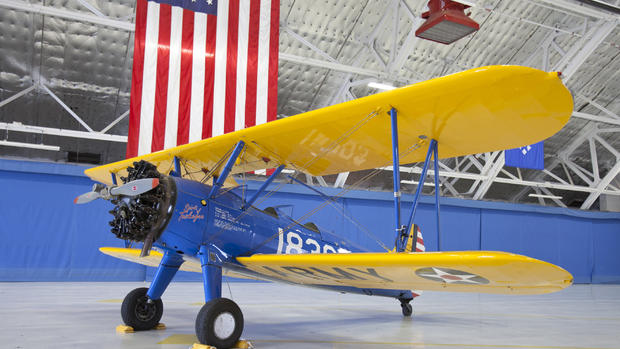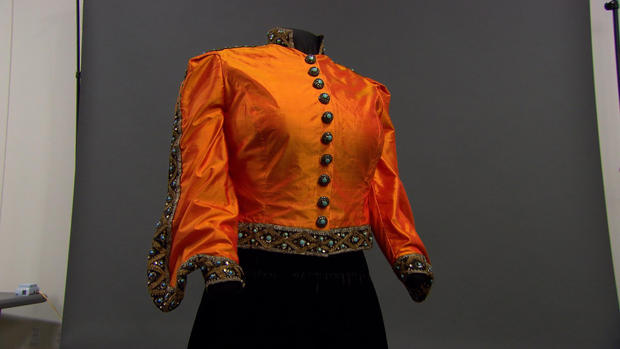Artifacts that will send a chill down your spine
60 Minutes goes to Washington this week for a story about the dark bronze building rising among the white marble monuments on the National Mall.
It's called the National Museum of African American History and Culture, and last spring it was an empty building, waiting to be filled. So, 60 Minutes producer Nicole Young and correspondent Scott Pelley went looking for the artifacts -- and the stories -- that will likely end up there when the museum opens this fall. What they found was a trove of relics, both chilling and moving, Pelley and Young told 60 Minutes Overtime (in the video player above).
Young was stunned by the sight of Emmett Till's casket, and a well-preserved, intricately embroidered KKK banner.
"It made me think, 'Wow, this is how far people went for hatred,'" says Young, referring to the banner. But the producer was elated to catch a glimpse of the bright orange garment Marian Anderson wore when she sang "My Country, 'Tis of Thee" on the steps of the Lincoln Memorial in 1939 -- a concert she defiantly performed after D.C.'s Constitution Hall turned her away because of the color of her skin.
One of Pelley's favorite artifacts was a miniature copy of the Emancipation Proclamation, printed not long after the original document was signed in 1863 by President Abraham Lincoln.
"Apparently, more than a million of these were printed and handed to Union soldiers so they could hand them to newly freed African Americans in the South," Pelley says. "Imagine that. A Union soldier sitting there, reading this thing to these slaves to tell them that they're going to be free."
So where did these artifacts come from? 60 Minutes spoke with the museum's curators, Mary Elliott and Nancy Bercaw, who tracked down bits of history, big and small, ranging from the KKK banner to a "Freedom Tin," which contained a slave's freedom papers.
As the curators explained to Pelley, the slave's descendants saved the tin for more than a century and answered the curators' open call for American artifacts.
It's these kinds of artifacts that will educate museum-goers about African Americans in every walk of life, Pelley tells Overtime.
"You're going to learn about the roots of slavery and how that was thrown off, and you're going to learn about segregation, but also, about the great achievements of fantastic African Americans in every walk of life: business, engineering, the arts...all captured in this one great story."
Editor's Note: Since this segment was originally published in May 2015, the Smithsonian's National Museum of African American History and Culture announced that it will open on Sept. 24, 2016.
Cabin photos courtesy of Edisto Island Historic Preservation Society
Museum photos and video courtesy of Smithsonian/NMAAHC and Patrick Anderson, DP
Marian Anderson photos courtesy of Marian Anderson Collection of Photographs, Kislak Center for Special Collections, Rare Books and Manuscripts, University of Pennsylvania; Getty Images; Newscom
Ashley's Sack photos courtesy of Middleton Place Foundation
Ashley's Sack will be on loan to the Smithsonian's National Museum of African American History and Culture from the Middleton Place Foundation

